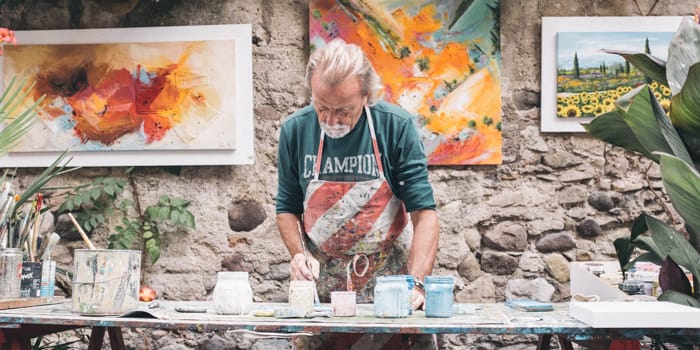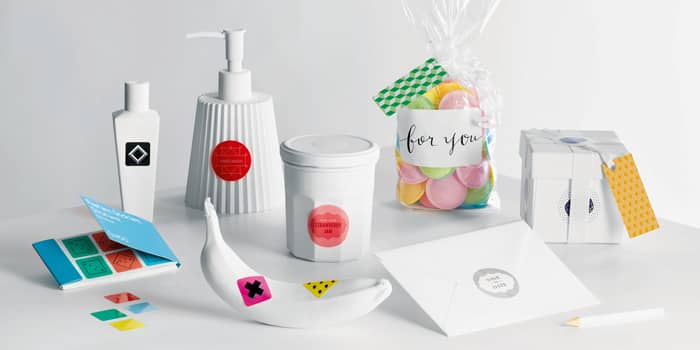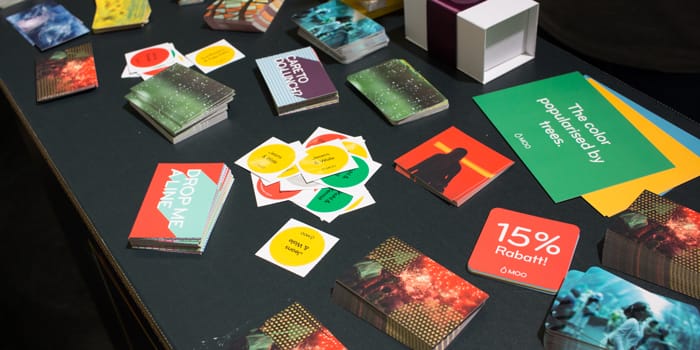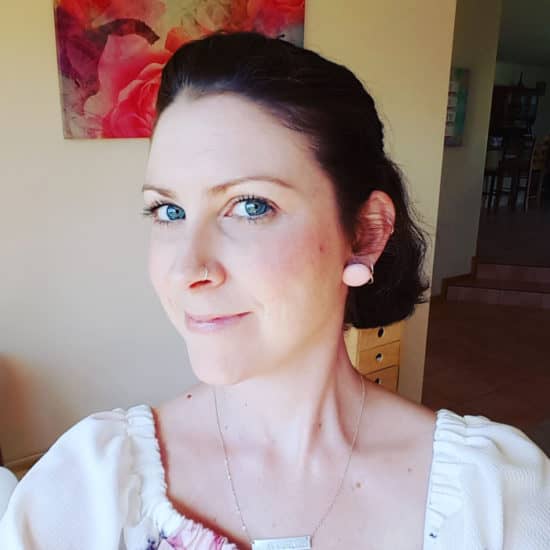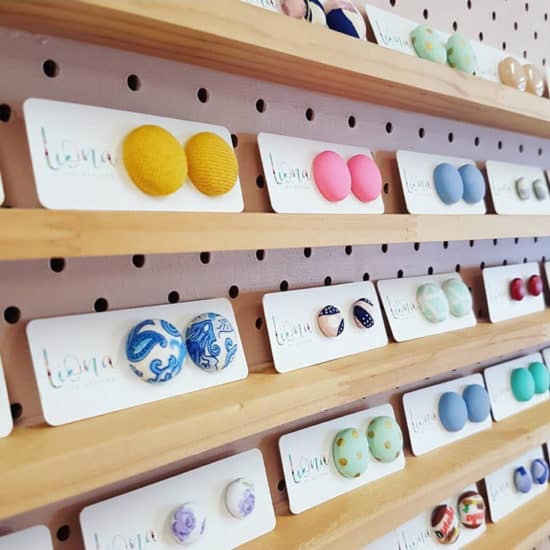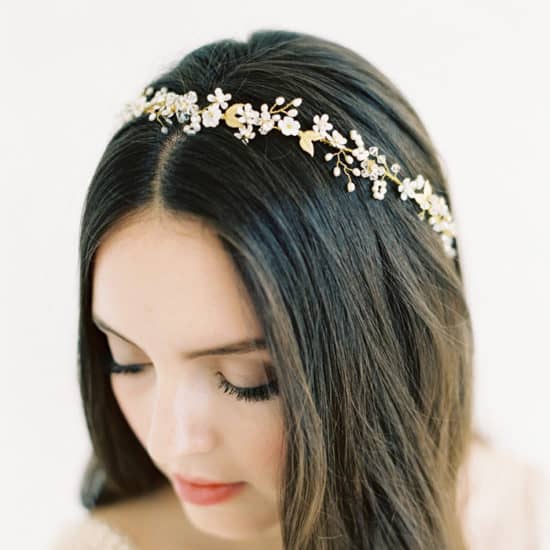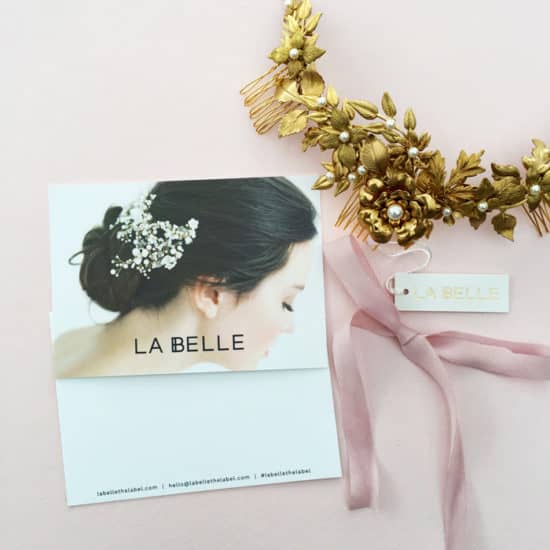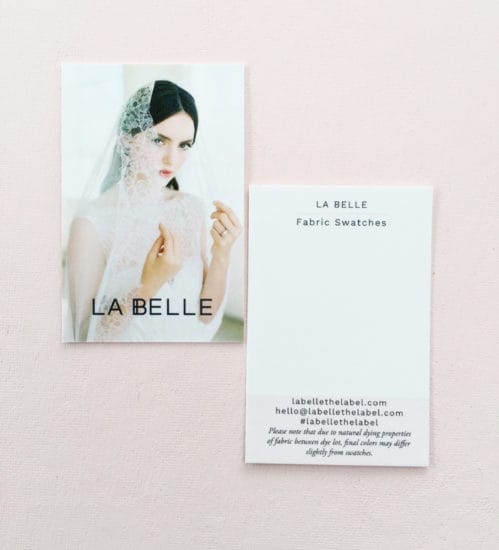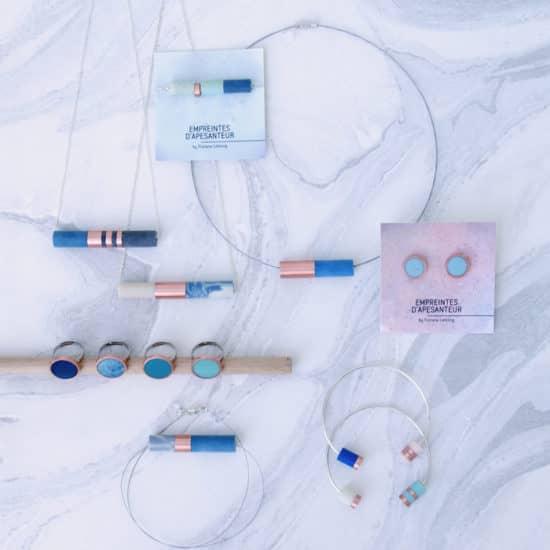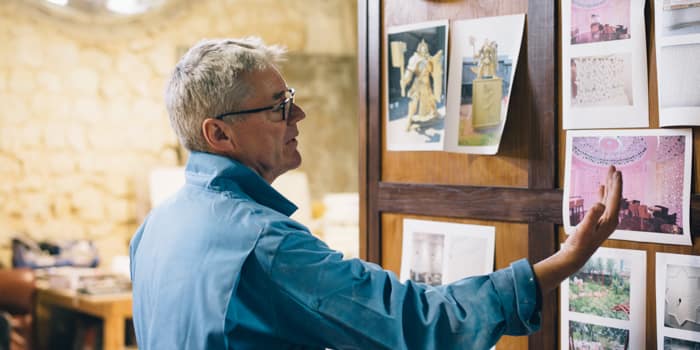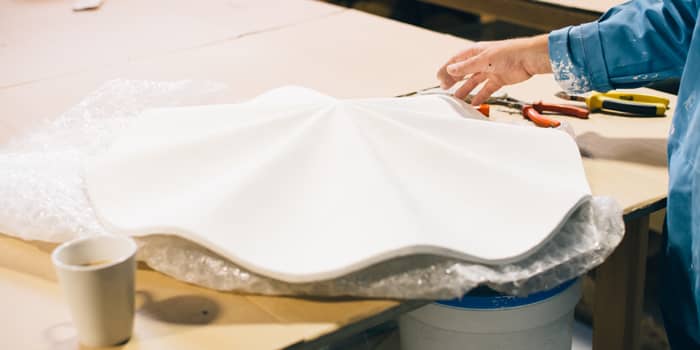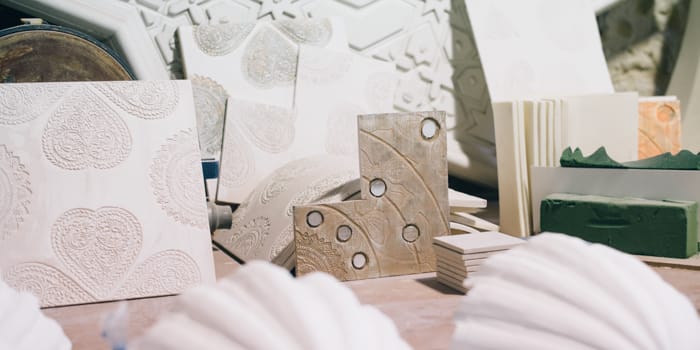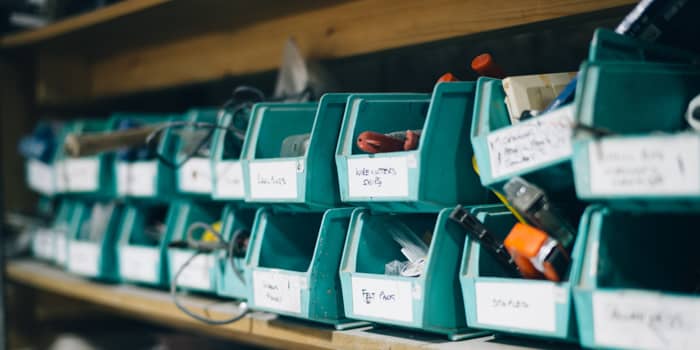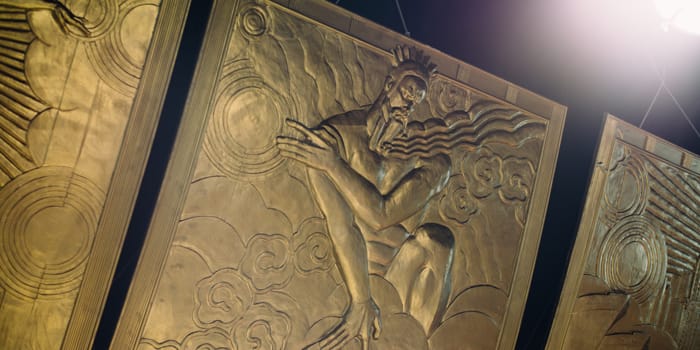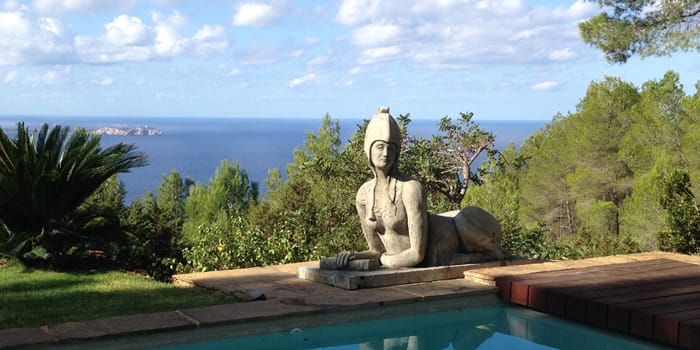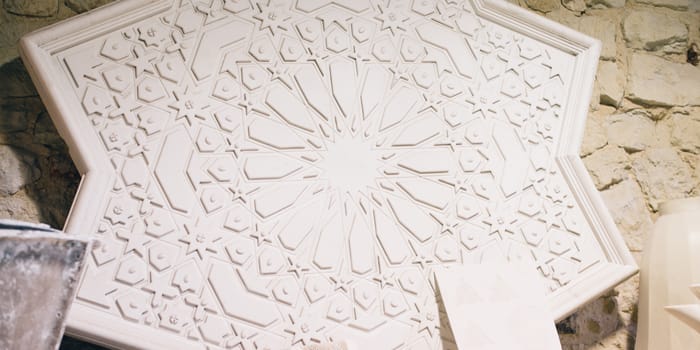4 ways to supercharge your real estate marketing

As a business owner, it’s important to keep customers coming in the door – new and recurring. Marketing can help you to stay top-of-mind and relevant even when your customers don’t need you right that minute. Here are 4 steps you can take to market yourself better.
1. Consistency is key
Your goal should be to create a consistent experience with your marketing. Customers should know what they can expect from you and be able to recognize your branding in a crowd. This helps you come across as more professional and more reliable. There are two separate factors here:
a. Tone of voice and aesthetic
Everything that goes out under your business name should have the same tone of voice and aesthetic. Since your clients are working directly with you, your brand voice should be similar to your personal voice — not exactly the same, of course, but if you’re a fun, witty person, that should come across in your branding.
For visual help, ColourLovers is a great place to browse palettes, and MOO’s online design tools make it super easy to have consistent branding, even if you’re doing it all yourself at the moment. Getting professional help with your branding is a great goal, but there’s no need to look unprofessional until you hit that point.
Also, make sure that your tone of voice and your aesthetic also match each other. If your brand voice is light and fun, your visual branding should have bright colors and fun accents, not Times New Roman and dark colors.
b. Marketing schedule
The other side of consistency is how often you’re sending or posting updates. Sticking to a regular schedule tells your clients that you’re reliable and also keeps you top of mind for potential customers.
On the other hand, if you post three times in one month and then once in the following two months, that doesn’t necessarily reassure would-be clients who are checking out your social presence before they give you a call.
2. Find your niche
There are plenty of other realtors out there that your clients could go with, so you need to find your niche — that special thing that makes you stand out — and stick with it. Your niche could be:
- The way you do business (fun and down to earth, instead of stodgy and professional)
- The kinds of clients you target (young clients without any children, or empty nesters looking to downsize)
- The types of property you specialize in (condos instead of houses, or focusing on properties in a specific part of town)
Whatever it is that you choose as your niche, you want to highlight your experience in that specific area. For more about getting real estate customers by showcasing your expertise, head to our post about the best way to get real estate customers.
3. Offline vs. online
Offline and online marketing both have their strengths — and their weaknesses. You should aim to balance them both, so that you’re getting the best blend of those strengths and weaknesses in your business.
As someone who is working largely with local clients, offline marketing should play a strong part in your business. Examples of offline marketing would be networking events, direct mail, or putting flyers up locally. It’s great for making a personal connection very quickly, especially if you’re actually out meeting potential clients, but it doesn’t scale as well as online marketing does.
Kickstart your offline marketing with Flyers. Partner up with local service providers or mortgage companies and ask them to hand out flyers, or ask previous clients to share them in the community for you. You could also make custom flyers for each neighborhood you work in and place them in local coffee shops.
On the other hand, online marketing is becoming more and more important as Google becomes the first place people look to find anything. This kind of marketing scales very well and often gets more returns over time.
For example, blogging is one of the more common forms of online marketing. You can post something on your blog once, work on the SEO for your site, and have that blog post rank on the front page of Google for years to come, getting you more clients over time.
Online marketing’s great for reach, but when it comes to making a personal, one-to-one connection, you can’t beat a real, offline encounter.
4. Be helpful first
It’s a common mistake to always focus on getting the sale — that’s what marketing is all about, right? But especially over the last decade or so, marketing in all industries has taken more of a customer-service focus. Rather than doing a hard-sell, it’s often better to be as helpful as possible to new customers (and your average person, who might refer customers to you).
This is also a great thing to keep in mind if you start blogging or when you’re writing social media updates: is this helpful content? If someone can get a useful take-away from it, whether they’re your client or not, then it passes the test and it’s great marketing.
Scale up your offline marketing with flyers
Amelia Graham started her career in womenswear print, but after 10 years designing for different brands, she decided it was time to put her name on her own line.
Amelia is a textile designer from London working across multiple disciplines within fashion, art, and interiors. Before deciding to go freelance, Amelia had an extremely successful career in womenswear print, spanning 10 years. So, why did she decide to go solo?
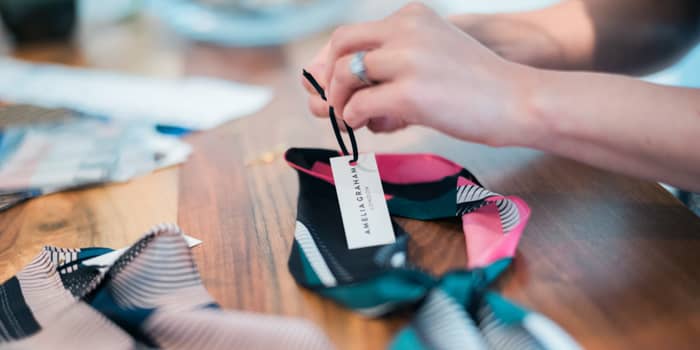
Where did the drive and ambition to start your own business come from?
I started my career in womenswear print, working anonymously under the guise of a number of different brands, appearing on both the catwalk and in international press. After 10 years, I decided I wanted to appear from the shadows and put my name on a product where I controlled the whole design process. I wanted to make sure production was maintained in the UK, whilst still being able to focus on where my true inspiration lies – within geometric form.
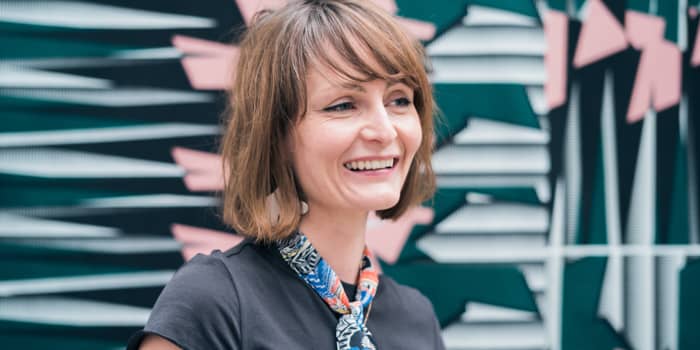
How did you know the time was right to start working on your own line?
I was driven to produce my first line while I was pregnant with my son. I continued working on commissions for brands such as Topshop, Calvin Klein and Rolling Stones alongside this – it was great to keep the collaborations going, it’s the key to staying creative.
Tell us about your influences – what inspired your love of geometric and arithmetic work?
My influences come from all over. My father is an architect and raised me to love Le Corbusier and Frank Lloyd Wright. He also sparked my interest in photography, buying me my first SLR as a gift for passing my A-levels. My mother loved textiles, especially those inspired by the styles of the Bauhaus movement and William Morris.
My own line’s got a clear modernist intention. I’ve got a strong sense of form and I use colour boldly – I believe textile design is about more than just fashion and interiors. They can be used anywhere.
Talk us through your creative process – do you work digitally or by hand before transferring your designs onto fabric?
It depends on what I’m creating, but usually digitally. The start point of all of my work is creative play. It’s a process that usually results in something true to what I’m trying to express. Sometimes I’ll work digitally from photos to create botanical and floral work, and sometimes I’ll play around in Illustrator straight away for more geometric pieces.
You’ve worked with some fantastic clients. How did you get your work noticed?
In the early days, it was purely about clients liking what I did and buying it off the peg at trade shows. Recently though, I’ve depended heavily on harnessing the power of social media to reach new clients and markets.
What’s been your favourite client project, and why?
Definitely a collaboration with a friend from my art foundation course, Ellie Mac under the guise of EvA for the Marina Bay Sands in Singapore. We produced four large scale art works for the newly refurbished interior which brought us to an international stage and allowed us to explore the boundaries of fine art and design.
How do you use brand identity to stand out from the crowd?
I believe that everything should be produced to the highest quality – from the products right through to the promotional materials. MOO is synonymous with this and allows me to retain control over the quality of my product collateral; from MiniCards for swing tickets to Stickers for packaging, allowing for a really strong brand identity.
What are you doing to promote your brand?
I’ve always been keen to promote myself and the brand as more than just a product. I love having a product and I love the demand for it, but collaboration and interdisciplinary dialogue are fundamental to who I am as a designer and is what my brand is all about. Social media is great too, as it allows me to show my process as well as my final products.
What are your tips for other entrepreneurs looking to launch their own business?
I found it really important to do everything myself when it came to branding my business. Initially, I thought I should hire someone to do the collateral, but I realized the only person who knew exactly what I wanted and could convey it best, was me.
Stand out from the crowd – shop the Luxe Product family
Ready for something new? Try Cotton – our new paper made from 100% recycled T-shirt offcuts.
We’re adding a new kind of paper to our line-up – and this one’s very special indeed. It’s made from cotton – specifically T-shirt offcuts salvaged from the fashion industry. Everyone’s got a favourite T-shirt – now you can have business cards made from the same stuff.
Cotton paper itself isn’t a new idea – in fact, paper’s been made from cotton for more than 200 years. Historically, it’s been reserved for the finest uses – money’s often printed on cotton paper, as well as artworks and manuscripts. But after wood pulp became popular, its production decreased dramatically.
In collaboration with Mohawk Fine Papers, we’ve resurrected this old technology – and combined it with a very new kind of source material. Recycled T-shirt scraps – saved from waste and given a new lease of life: as your business cards. Together, this old manufacturing technique and this new material create something beautiful – a durable, beautifully textured, bright white paper. We think you’ll love it.
WATCH: Find out more about the story of our brand new Cotton paper
https://youtu.be/A8BLSf0toI0
How we make Cotton paper:
1. Save the scraps
Cotton jersey offcuts are salvaged from pattern cutters – whenever the pieces to make a T-shirt are cut from a roll of fabric, the bits left behind usually go to waste
2. Pulp ‘em
Once we have enough scraps, they’re pulped – shredded down and mixed with water to make a fine enough pulp to make a very fine paper.
3. Roll out the paper
Just like any other paper, Cotton’s made by running the pulp through a machine to first agitate out the water, then dry the sheets.
4. Cut to size… and get ready to print
The sheets of premium, bright-white paper are trimmed to the right size for our printing presses. They’re waiting there now, ready for your to put your name on them.
We can’t wait to see what you make of this new paper – it feels amazing (well, it feels like cotton) and it’s a dream to print on. Naturally bright white, it makes lettering and colours look even sharper and brighter. And as it’s made from completely recycled, pre-consumer waste, it means you can look good while you’re doing good.
But what we really love is the story. What could make a more memorable introduction than handing someone your business card and telling them it’s made out of the same stuff as a regular cotton T-shirt?
October 2022 update: This article references the way we used to make Cotton Business Cards. We now use a different process.
Planning for your first craft event? We’re excited for you! Here are some tips to help make your stand a stupendous success.
Why is it awesome to run a stand at a craft fair or event? Let us count the ways…
First off, it’s a top networking opportunity. A craft fair or event gathers everyone in your market together, from small business owners and customers to suppliers, stockists and buyers. Even if the word “networking” makes you nervous, remember everyone there’s in the same boat. Your stand is a ready-made ice-breaker, so let your products speak for themselves. Even if you’re a wallflower by nature, it’s a fantastic way to meet new people and bond over your shared passions.
Of course, you’re also there to make sales. It’s a rare person who can pop by a craft event without collecting some treasures. By selling at an event, you save on postage and packing and get the chance to meet your customer in person too.They’ll go away with a lovely purchase and inspiration from you about how to get the best from it.
You can grow your business too – events like these are fantastic opportunities to meet and learn from similar businesses, get new ideas and also benchmark your prices.
So, if you’re gearing up for an event, follow our tips for a superb stand…
Know your strategy
First things first: know what you want to achieve, and who will help you do it. Are you targeting new customers, bricks-and-mortar stockists or buyers for brands? Or do you want to build collaborative partnerships?
Knowing what you want to get out of the event will help you focus your conversations throughout the day, and help you make the most of any time you’re not with customers.
Think about what you want people to remember about your business and have your elevator pitch to hand – perhaps you offer ‘jewelry crafted from reclaimed silverware,’ ‘rainbow knitted socks and homewares’ or ‘sophisticated prints and originals in watercolour.’ If you’ve got a clear and confident way to say what you do, you’ll communicate well on the day, however busy or shy you might feel.
Bring another person
Even if you normally work alone, a partner to help run your stand can make a huge difference. Find someone who’s a good counterpoint to you – if you’re a bit reserved, choose someone extroverted and chatty who can keep conversation flowing when your energy starts to lapse. You can cover each other for lunch and bathroom breaks, and if things get busy, they can help you make a connection with people who might otherwise have to wait to speak to you.
Make lasting connections
Keep track of the people you meet throughout the day and note down what you talked about, so it’s easy to drop them a line afterwards and follow up with a friendly email or phone call. Collecting business cards is a great first step, but it’s easy to forget who was who and what you talked about after a busy day, unless you capture some extra information.
A simple notepad and pen will do the job, along with a stapler to keep business cards attached to the pages. There are some cool lead capture apps around too, which allow you or your new contacts to enter their information on a smartphone or tablet. If you really want to cement the relationship, you could always follow up your best meetings with a hand-written Postcard too.
Brand yourself
Yes, your work is amazing. But there are a lot of talented folks out there, and a branded stand can give your work that extra edge. Think colours, logo, font, product names – anything with a theme that ties your offering together.
It could be labels that match with posters and displays on the stand, or maybe a series of names that link your products together. For example, if you sell red, blue and yellow ceramics, you could name them strawberry, blueberry and banana, and put matching fruit snacks in the bowls and plates for customers to chew on as they browse.
If your focus is on repeat business or partnership, think about your stand as the first step in a journey. Is your stand’s look and feel compatible with your online shop? Will it be recognisable and consistent for people who visit your website after receiving a business card?
Showcase your wares
Crafts can leave people a little bit in awe. They’re curious, but they don’t want to pick up things that are delicate or disturb a carefully-arranged display. You can help them feel welcome to explore your products with a user-friendly display. That doesn’t mean you have to put everything in utilitarian racks or stacks, of course – you can have a gorgeous arrangement at the back of the stand and something more user-friendly at the front. Choose interactive things like a spinnable carousel stand or rummage-friendly basket that people can browse without feeling that they’re manhandling your goods.
Make sure your prices are visible and you’re showing a range of offerings that includes everything from cheap and cheerful to show-stopping masterpieces. Try to include a mix of strategic choices, including your best sellers and most competitively priced items, and some newer innovations and more expensive items too.
You could include some ‘event exclusives’ – prototypes of new ideas you are working on. You’ll get a range of people’s reactions and feedback on your ideas, and make them feel they’re getting a special experience too.
Have a talking point
Make it easy to start conversations with an ice-breaker. Bring along some interesting bits and pieces that tie into your overall brand. Want to wrap ribbons around the stand legs or decorate with houseplants? Go for it. Or try a humorous prop that will make people smile and provide a photo opportunity. (You know you’ve been waiting for the chance to give that inflatable banana its day in the spotlight.)
If your business involves something people don’t see every day, whether it’s a spinning wheel, a laser engraving machine or a pyrography pen, bring it along and let people see you crafting your wares in real-time. As well as being a great talking point, it shows off the skill and care that goes into your work.
Market with freebies
When it comes to events, one thing is for sure – everyone loves a freebie. If your budget allows, put together some goody bags which include a little gift or two, along with some flyers and business cards.
A neat option is to choose a freebie that doubles as a marketing message. Branded Stickers are a great choice. Or how about a pack of Postcards wrapped in a ribbon?
You could even give out handmade origami creations. And, of course, a few sweets. Who doesn’t love sweets?
Have you run a successful event stand? We’d love to hear your tips. Leave us a comment or send us a tweet.
We’re totally lusting over this awesome jewelry! From the super sparkly to the ultra modern – you won’t be able to resist these designs.
Meet Liona, Hannah and Floriane. Each of these wonderful ladies design show-stopping jewelry that we just had to share! We were totally inspired by the way they use Business Cards to merchandize and sell their wares, too. Check them out.
Liona Lee Designs
Liona Lee, based in Tasmania, Australia, creates unique, fabric statement jewelry that’s fun, fresh and feminine. Before setting up her gorgeous jewelry company she was working as a Dispensary Technician in a pharmacy.
Liona started Liona Lee Designs as her creative outlet – she was sick of boring and drab button jewelry so started making her own modern, colorful and on trend pieces: “there’s nothing worse than putting on your favorite outfit and realizing it’s missing something! Your style instantly says a lot about you, so finishing your outfit with the right accessories is the fastest and easiest way to update your look”. Liona takes inspiration for her pieces from fashion trends and fabric patterns and designs.
When Liona was designing her cards, she knew she wanted them to be simple yet effective: “I wanted my logo to stand out, but also wanted the cards to be simple so that they didn’t take away from my jewelry as most of my pieces involve fabric patterns. Liona chose matte MiniCards: “they’re the perfect size for my handmade earrings and they also double as fabulous swing tags for my necklaces! The quality is the best you can get. I wouldn’t get my cards from anyone else but MOO. Everyone says how effective they are and want to know where they can get some! I don’t like giving up my secret too easily though!”
La Belle The Label
La Belle – owned by Hannah – is an artisan bridal accessory studio located in Canberra, Australia. Hannah’s range of wedding veils, dressing robes and hair accessories are imbued with a botanical, bohemian vibe. She draw’s inspiration from the exquisite plants and flowers her country has to offer to create a minimalist and effortlessly feminine aesthetic.
La Belle sends her Business Cards out to clients ordering fabric swatches. When creating her cards, Hannah knew she needed a clean and elegant design: “we chose hues that would work seamlessly with our other branding and match the materials we use in the studio. The final card features a photograph of one of our models wearing a delicate, translucent bridal veil. We chose this specific image to complement and heighten the impact of the fabric samples”.
La Belle’s cards have a matte finish: “our fabric swatches work beautifully with the quality of the card. They look naturally romantic and they complement our branding perfectly. We couldn’t be happier with the overall result – fresh, polished and luxurious. Our customers absolutely love receiving their fabric swatches in the post. The card has made the experience that much more meaningful and personal to brides. Thank you MOO!”
Create your own matte Business Cards
Floriane Leblong
Floriane Leblong, is based in Lille, France. She aims to create ‘new energy’ through her handmade jewelry line, ‘Empreintes d’apesanteur’ by combining a variety of materials to create a totally new product. Floriane studied Textile Design for 3 years at the Ecole Duperré in Paris. She then went on to do a Higher Diploma of Applied Arts at Esaat in Roubaix. Following her studies, Floriane got a job as a textile designer for an upholstery and wallpaper company. It was alongside this that she created her first jewelry line.
Floriane’s inspiration can come from almost anywhere, a Pinterest image, a journey or the music she listens to. She even tries to translate emotions and sensations into colors or materials. Floriane loves contemporary, minimalist design and enjoys discovering new designers and craftspeople at events such as London Fashion Week, or the Salon Maison & Objet in Paris.
Floriane’s #MOOcard creations started with a photo she’d taken herself during a photoshoot for her first collection: “I was able to develop and create my entire visual identity thanks to the multiple formats and products offered by MOO, and with Printfinity, I can match the colour of my backing cards to my products – I love the consistency!” She sends matte MiniCards out with her necklaces and puts her earrings and bracelets onto Square Business Cards. She’s also started adding care instructions onto the cards: “people always react positively to my cards and I often get comments on the MiniCards in particular – it reminds people of the French Metro ticket. I really think these finishing touches seal the deal and help people to remember my brand. Thanks MOO!”
Add the finishing touches to your creations with Square Business Cards
Real estate is a competitive field, and you want to make sure you’re doing everything you can to stand out from the crowd and draw customers to you. And what’s the best way to make sure customers choose you? Provide social proof.
The idea behind social proof when boiled down to its simplest version is that people see other people doing something and assume it’s the best thing to do in that situation. If you see one restaurant that’s completely empty and another restaurant next to it that has a line going out the door, your assumption is likely to be that Restaurant A is the pits, and Restaurant B is where you should go. In your real estate business, there are four ways you can easily show social proof in a way that makes your customers more likely to choose you over someone else:
Testimonials
If you don’t already have testimonials prominently displayed on your website, you’ll want to add them ASAP. You should also make sure they’re up-to-date — showcase as many recent testimonials as possible, with the more recent ones showcased first.
Another way you can show off your testimonials is via social media posts. For example, images of the happy customers and/or quotes from them, either posted as text or with the text put into images.
Potential customers will look at these testimonials and see that not only do you have several previous clients (a good sign!), but also that those previous clients were so happy with your services that they were willing to go on the record about it (an even better sign!).
Awards and licenses
Awards and licenses are a sign that someone else has acknowledged your skills and expertise, so they’re also a valuable piece of social proof. You’ll want to have all awards (local, national, etc.), along with all of your license information front and center on your site — probably somewhere on the homepage, as well as on your about page.
You can also add an “as seen on” section that has the logos of sites/magazines/other places where you’ve been featured or quoted. This is another way of showcasing that experts in the field have acknowledged you as an expert, and combined with listing your awards and licenses, reassure potential customers that they’re about to make the right choice.
Referrals and conversations
Word of mouth is great for social proof (and it’s driving more sales than ever, with word of mouth being the most important factor in big-ticket purchases for both millennials and baby boomers). Because of this, you want to make it easy not just for previous clients to refer you to new clients, but also make it easy for potential clients to reach out to past clients (with their permission, of course). You can also encourage previous clients to leave reviews on places like your Facebook page, so that potential clients can see it and comment on their reviews to ask further questions or get more details.
To streamline this process, you need to stay in touch with previous clients. Email marketing tools like MailChimp or follow-up tools like Contactually are great for this. You might also want to consider hosting networking events or some kind of other fun, private event for previous clients. The idea is that you continue to build goodwill and provide value to clients long after the final sale paperwork is signed, so that they’re happy to do small favors for you (like talking to potential clients!).
Experience
Customers are always going to want to know how long you’ve been in business, so that information should be easily accessible. It’s easy to add into a professional bio on your homepage or about page (“Rebecca got her real estate license in 2012 and has been practicing for five years now…”).
Once you’ve been in business for at least five years, you’ll probably want to bring more attention to the time you’ve been in business by mentioning it on your homepage more prominently, or having someone design a badge that you can put in your site sidebar. This goes double if you’ve been in business for ten years or more — that’s a lot of experience that you should be showcasing to potential clients!
Hosting an open house soon? Check out these 5 quick tricks to get more from your event
Ian Bishop is a bespoke, 3D design artist based in the UK. We caught up with him to explore his inspiration and process: how he goes from brief to a real-life, stunning design.
What is 3D design and how did you get into this field?
My work ranges from lighting to sculpture to furniture. I studied a multi-disciplinary course at art school, which I really enjoyed, because it meant I could explore multiple fields and mediums of design. I’m interested in making things, no matter what the medium.
What were you doing before you set up your business?
I worked for a ceramics company in their design studio. My major (at art school) was in industrial ceramics, so I naturally fell into working in that field following my graduation. I then worked for a local company who produced multi-disciplinary design, so from there I knew that there was a way for me to continue doing that kind of work.
At what point did you decide you wanted to stop working for other people, and set up on your own?
I started taking on more and more freelance work whilst working at the ceramics studio. It started with the odd job – people asking me to model this or sculpt that. Over time, I naturally made the crossover – I felt I’d built up enough work, so I went for it.
Talk us through your process. How do go from taking a client’s brief on paper to turning it into a tangible, physical 3D object?
Usually, my client would have some idea of what they wanted – a kind of low relief panel, or a sculpture, or lighting for example. Sometimes they come to me with it already mocked it up in CAD, but they’d have no idea how to actually make it. I’d then have initial meetings with them to discuss the process of how that idea could be made, and we’d work together on the design, ultimately making it into a reality. It’s a very collaborative process – which is one of the things I enjoy most.
There’s a beautiful combination of realism, classicism and quite intimate design references in your work – what brings it all together?
If it’s for a client, then it’s all about problem-solving – combining materials and processes to realize our collaborative idea and reaching an outcome that the client is happy with.
If personal work, I like to take a lot of inspiration from sculptors like Giacometti.
How much of your time is split between commissions and personal work?
I would say it’s around 70% commissions, 30% personal. It’s interesting as I’ve often thought about changing the split to lean a little more towards personal creations, but I really like the commissioned work – it’s incredibly intellectually stimulating – you really have to work together with the client to solve issues.
What’s your favorite client project you’ve worked on?
I worked on a really interesting project recently – a large sphinx – around 2.5m tall and 3m long for a lovely client in Majorca. There was around two tonnes of clay which was cast in a kind of stone material. It was interesting to ship out and we had to hire the second biggest crane in Ibiza to move it!
What’s your favorite medium to work in?
Probably clay or plaster. Clay is just amazing because you can model it, you can take things away, you can add to it – it’s not like carving a piece of stone where it’s a lot more permanent. Plaster is always interesting too – it’s really versatile – there’s so much you can do with it.
How important is brand to you and how are you focusing on building and promoting your brand?
Most of the work I get is by word of mouth. Because my work and creative process is so visual, I rely heavily on photography. Being able to put a different image on the back of every business card to showcase my range of work was such a great option for me! When I’m meeting someone new, I can tailor my card to suit the kind of client I’m giving it to. My website is essential too, it acts as a portfolio – a place for people to easily browse my work.
What are your tips for aspiring entrepreneurs wanting to start their own business?
Work really hard. Listen to people, and try to understand what it is that they want. Most importantly, try your hardest and do your best on each project you’re given.











